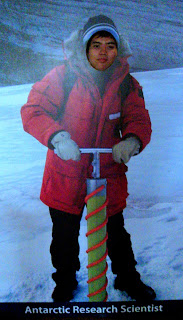Manila Ocean park

For the first time nakarating din sa ocean park. Tagal ko hiniling na mapunta sa park na to at nangyari na nga ngayong taon. Nasa likod ng Quirino Grandstand yung park at malaki sya. Maraming attractions sa park hindi ko napuntahan lahat dahil late na kami nakadating. Ang astig nung malalaking isda, napakadaming fish na first time ko lang nakita. Buti nagkasya lahat yun. Ang isang cool ay yung may snow kahit maliit eh maganda na din hehe sinulit ko ang pagpasok dun, haba kasi ng pila eh Marami din mabibili na souvenirs kaso yung saya nung nandun ay sobra sobra na! hehe


